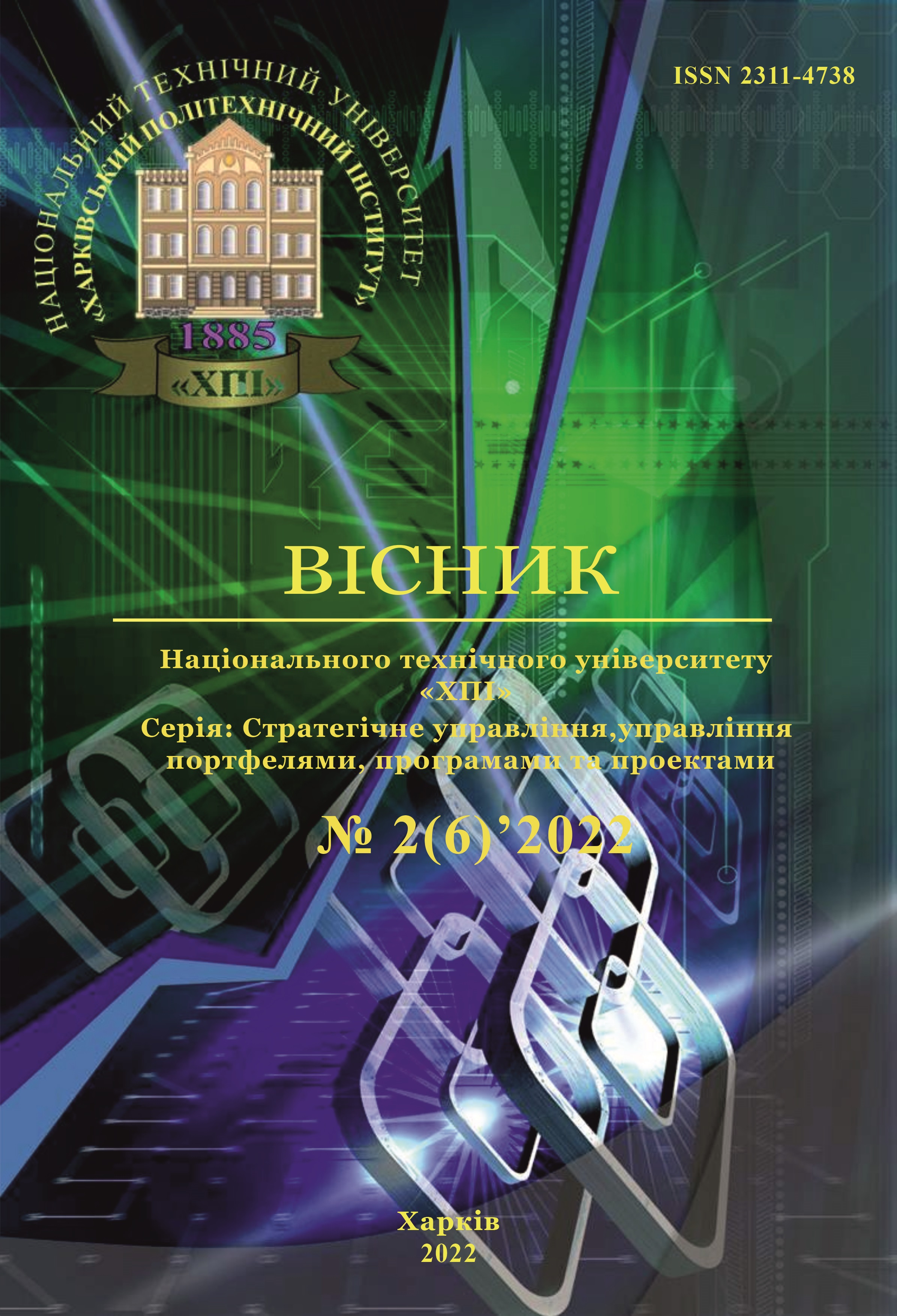STRATEGIC ADVERTISING MANAGEMENT DURING THE PRODUCT LIFE CYCLE
DOI:
https://doi.org/10.20998/2413-3000.2022.6.11Keywords:
product life cycle; diffusion of innovations; Bass model; advertising; optimal control; dynamic programming; contraction mappingAbstract
The subject of the research is the development of a strategy for optimal management of the company's advertising expenditures when promoting a new product to the market throughout its entire life cycle. To model the sales dynamics of a new product, the article proposes a modification of the Bass diffusion of innovations model, which makes it possible to numerically simulate the impact of advertising expenditures on the intensity of sales of the two groups of consumers identified in the model, namely innovators and imitators. The problem of optimal control of advertising expenditures for product promotion throughout its entire life cycle is formulated. As an optimality criterion, the expected net present value of cash flows from the sale of the product is chosen. It is shown how to solve this problem by means of dynamic programming techniques. An algorithm for numerical search for the optimal control program of advertising expenditures based on the method of contraction mapping has been developed and implemented. As a result of the algorithm, the optimal level of advertising expenditures is established in the form of a law with feedback, where the degree of market saturation acts as a state variable of the system. On this basis, one can find the optimal level of advertising expenditures in each time period and compare sales trajectories with different advertising strategies. Two cases of advertising aimed at innovators and imitators were studied separately. Numerical experiments were carried out, on the basis of which the qualitative characteristics of the strategy for optimal control of advertising expenditures for these two cases were determined. The influence of the chosen management strategy on the form and duration of the product life cycle has been studied. Conclusions are drawn about the comparative economic efficiency of various advertising management strategies. Optimization of the advertising budget using the developed methodology allows enterprises to check whether the planned level of advertising spending is excessive or insufficient. The application of the methodology allows not only to find the optimal size of advertising expenditures depending on the stage of the product life cycle, but also to predict sales and profits for future periods.
References
Rink D., Swan J. Product Life Cycle Research: A Literature Review. Journal of Business Research, Vol. 7, Issue 3, 1979, pp. 219-242.
Prasad R., Jha M., Verma S. A comparative study of product life cycle and its marketing applications. Journal of Marketing and Consumer Research, Vol. 63, 2019, pp. 62-69.
Григорчук Т. Життєвий цикл товару. Маркетинг: Дистанційний курс. URL: https://sites.google.com/site/ marketingdistance/tema-5/5-5-zittevij-cikl-tovaru (дата звернення: 19.01.2022).
Rogers E.M. Diffusion of Innovations. 5th ed. New York, 2003. 576 р.
Мельников О.С. Дифузія інновацій. Інноваційне підприємництво: креативність, комерціалізація, екосистема : Навч. посіб. для вищих навч. закладів. За ред. Ю.М.Бажала. Київ, 2015. С. 110-125.
Тард Г.-Ж. Законы подражания. Москва, 2011. 304 с.
Bass F.M. A new product growth model for consumer durables. Management Science, 1969, Vol. 15, N. 5, pp. 215–227.
Mahajan V., Muller E., Bass F.M. New Product Diffusion Models in Marketing: A Review and Directions for Research. Journal of Marketing, Vol. 54, 1990, pp. 1-26.
Griliches Z. Hybrid Corn: An Exploration in the Economics of Technological Change. Econometrica 25(4), 1957, pp. 501-522.
Мур Д.А. Преодоление пропасти. Как вывести техноло–гический продукт на массовый рынок. Москва, 2012. 336 с.
Гареев Т.Ф. Диффузия новых технологий. Вестник Академии управления «ТИСБИ», 2004, № 4. С. 73–77.
Перерва П.Г., Коциски Д., Сакай Д. и др. Трансфер технологий. Харьков-Мишкольц, 2012. 599 с.
Gurumurthy K., Mukherjee A. The Bass model: A parsimonious and accurate approach to forecasting mortality caused by COVID-19. International Journal of Pharmaceutical and Healthcare Marketing, 2020. Vol. 14, N. 3, pp. 349–360.
Горбачук В.М., Дунаєвський М.С., Сирку А.А., Сулей–манов С.-Б. Обґрунтування дифузійної моделі впровадження інновацій та її застосування до поширення вакцинацій. Кібернетика і системний аналіз, 2022. Том 58, №1. С. 98-109.
Гордин В.А. Дифференциальные и разностные уравнения: Какие явления они описывают и как их решать : учеб. пособие. Москва, 2026, 531 с.
Мельников О.С. Влияние рекламной деятельности на скорость диффузии инноваций. Бизнес-Информ, 2009, №2(1), с.68-71.
Stokey N.L., Lucas R.E. Recursive methods in economic dynamics. Cambridge, Massachusetts, and London, England, 1989. 588 p.
Judd K.L. Numerical Methods in Economics. Cambridge, Massachusetts, and London, England, 1998. 633 p.
Хулей Г., Сондерс Д., Найджел П. Маркетинговая стратегия и конкурентное позиционирование. Днепропетровск, 2005. 800 с.
Downloads
Published
Issue
Section
License

This work is licensed under a Creative Commons Attribution-NonCommercial-ShareAlike 4.0 International License.
Our journal abides by the Creative Commons copyright rights and permissions for open access journals.
Authors who publish with this journal agree to the following terms:
Authors hold the copyright without restrictions and grant the journal right of first publication with the work simultaneously licensed under a Creative Commons Attribution-NonCommercial-ShareAlike 4.0 International License (CC BY-NC-SA 4.0) that allows others to share the work with an acknowledgement of the work's authorship and initial publication in this journal.
Authors are able to enter into separate, additional contractual arrangements for the non-commercial and non-exclusive distribution of the journal's published version of the work (e.g., post it to an institutional repository or publish it in a book), with an acknowledgement of its initial publication in this journal.
Authors are permitted and encouraged to post their published work online (e.g., in institutional repositories or on their website) as it can lead to productive exchanges, as well as earlier and greater citation of published work.

